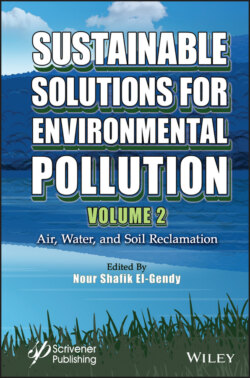Читать книгу Sustainable Solutions for Environmental Pollution, Volume 2 - Группа авторов - Страница 48
1.10.9 Sediment Management
ОглавлениеSludge and sediment accumulated over time in CWs must be extracted regularly to maintain bioremediation efficiency: over time, their accumulation reduces the residence time and treatment capacity by filling the volume of deep basins. The monitoring of the performance of a CW, carried out over 7 years, showed a decrease in efficiency over time, linked to soil saturation. In fact, this CW saw its performance decrease after 2 to 3 years of operation, particularly in terms of purification performance for Kjeldahl nitrogen and Ptot. Also, it is recommended to dredge the bottom at least every 5 years, in order to keep at minima the hydraulic operation in the CW, but also, at the same time, to extract non-biodegradable micro-pollutants such as phosphorus and metals, and to avoid the accumulation of OM leading to a reducing environment favorable to the production of GHGs. Shoreline restructuring can be carried out at this time to restore habitat diversity (Basilico et al., 2017). Removing sediment already trapped in CWs uses a variety of mechanical techniques as excavation or dredging.
The low oxygen availability in wetland sediment is the main obstacle to the degradation of organic contaminants. To overcome oxygen limitation, a basic biostimulation technique consists in cultivating the sediment, either in situ, during a grazing transitional phase after drying-out: traditional practice of “assecs” or ex situ after spreading the dredged sediment in a thin layer to facilitate oxygenation, with optional nutrient additions (Ockenden et al., 2014). Droughts of very high intensity (1 year in case of assec) kill any vegetative part of aquatic plants. Faced with such disturbances, the resilience of aquatic flora depends only on a persistent pool of seeds or natural seed inputs (Arthaud et al., 2012). Finally, the assec technique shows a positive effect on the biodiversity of macrophytes and macroinvertebrates in the littoral and on oligochaetes in the center of the CW (Arthaud et al., 2013).
The periodic regeneration of aquatic facies caused by the management of CWs seems positive on their biodiversity. In a network of nested wetlands, the specific biodiversity decreases over time after a disturbance for all CWs. However, there is a significant interaction with the location of the CW within the network. It does not seem to influence species richness during the first 2 years after disturbance, but from the third year and afterward, the CW linked to a high number of upstream CWs showed a constant decrease in richness, in contradiction with the idea of an increase in species richness due to increasing plant dispersal elements (diaspores) inputs from upstream (Arthaud et al., 2013).
